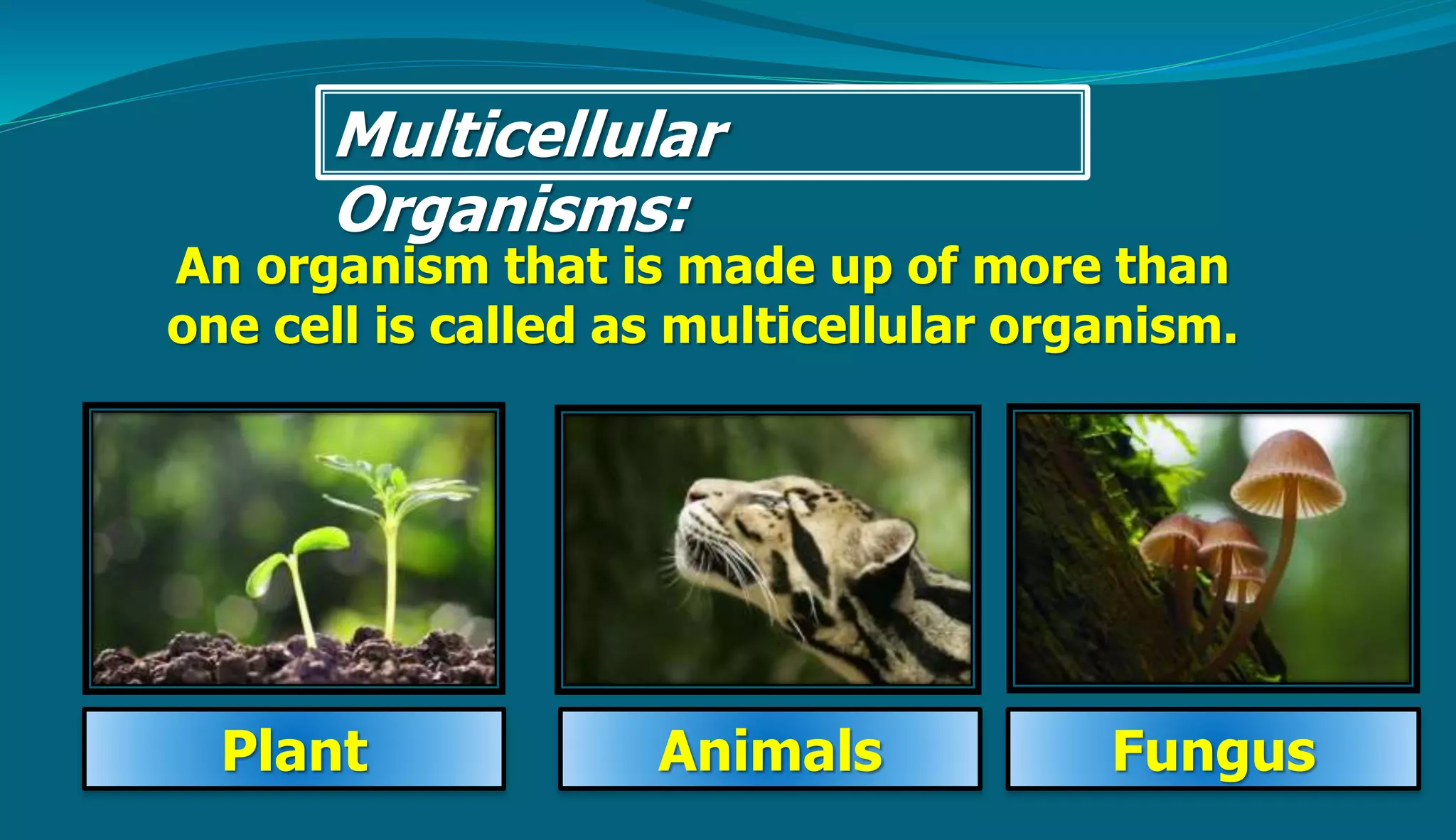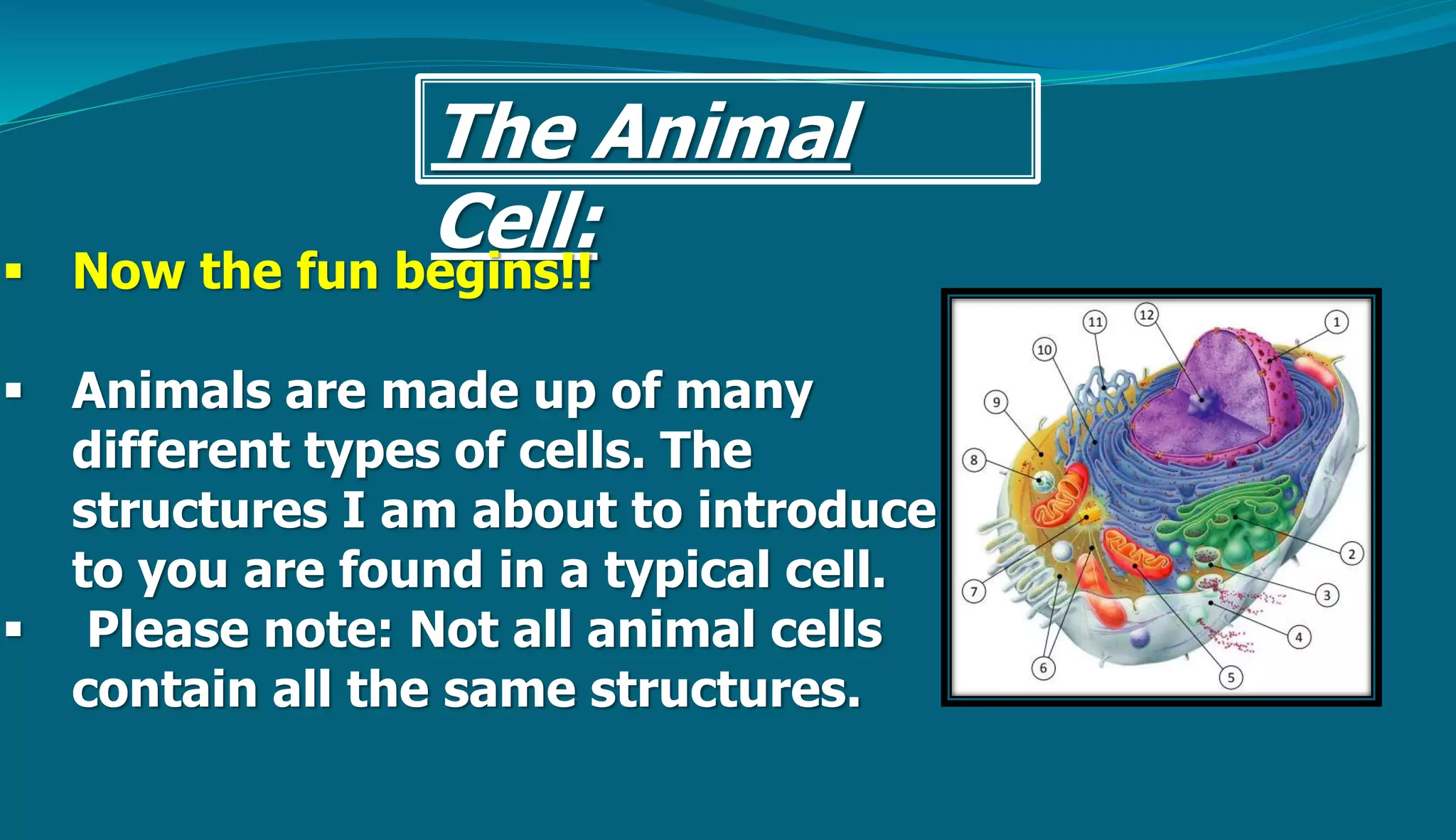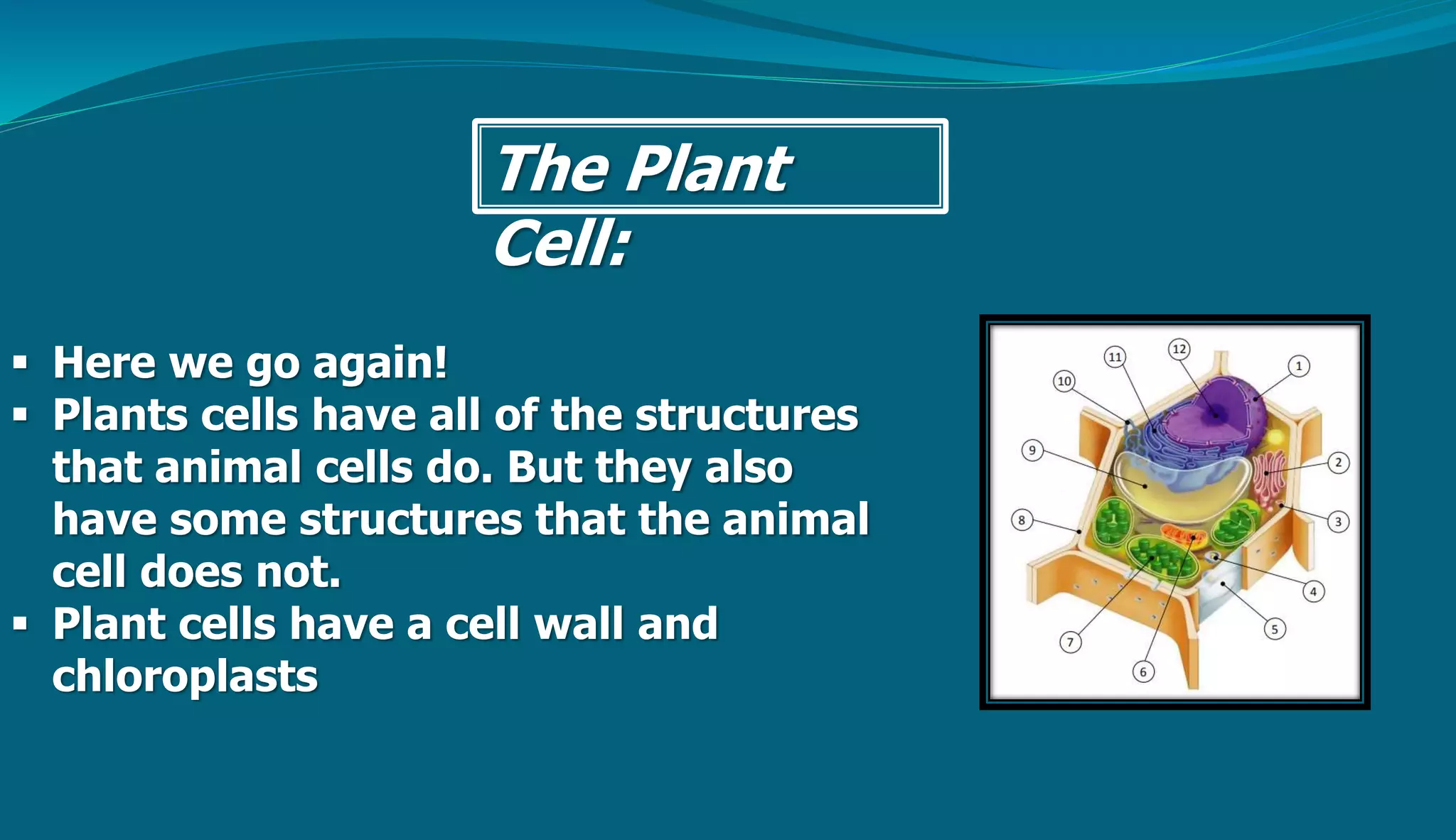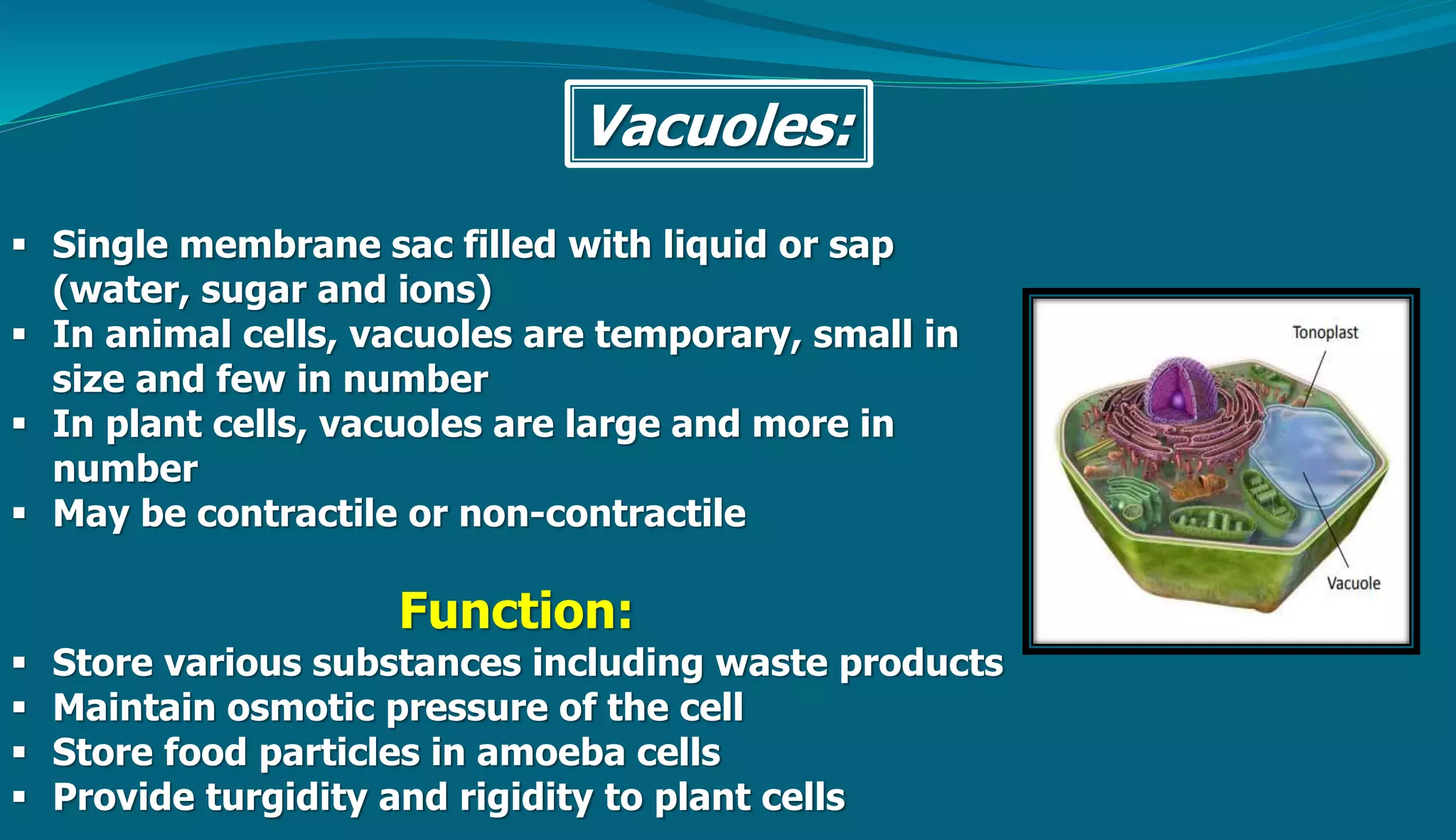This document provides information about different types of cells. It explains that cells are the basic unit of structure and function of living things. There are unicellular organisms composed of a single cell, like euglena and paramecium, and multicellular organisms composed of multiple cells, like plants and animals. The document describes key structures of animal cells like the cell membrane, cytoplasm, nucleus, vacuoles, and mitochondria. It also notes additional structures specific to plant cells, including the cell wall, chloroplasts, and chlorophyll. The roles of these various cell structures are outlined. In concluding, some of the main differences between animal and plant cells are highlighted such as plant cells generally being larger with a cell wall, pl


















